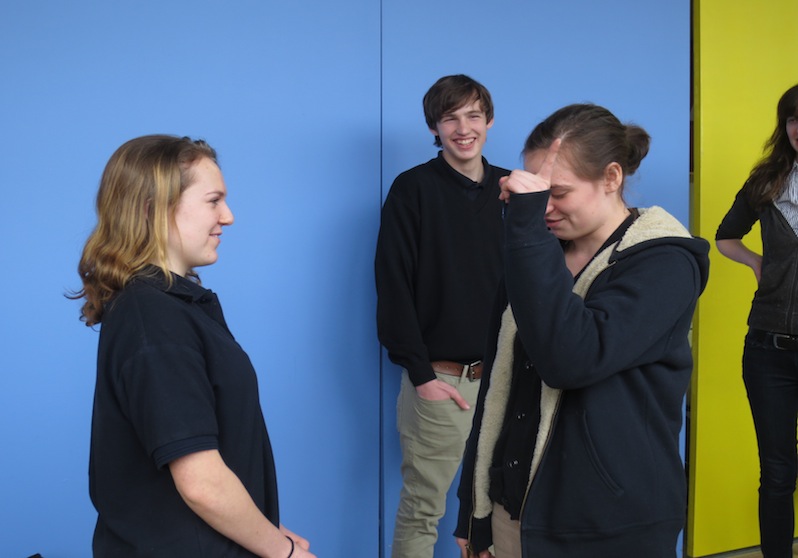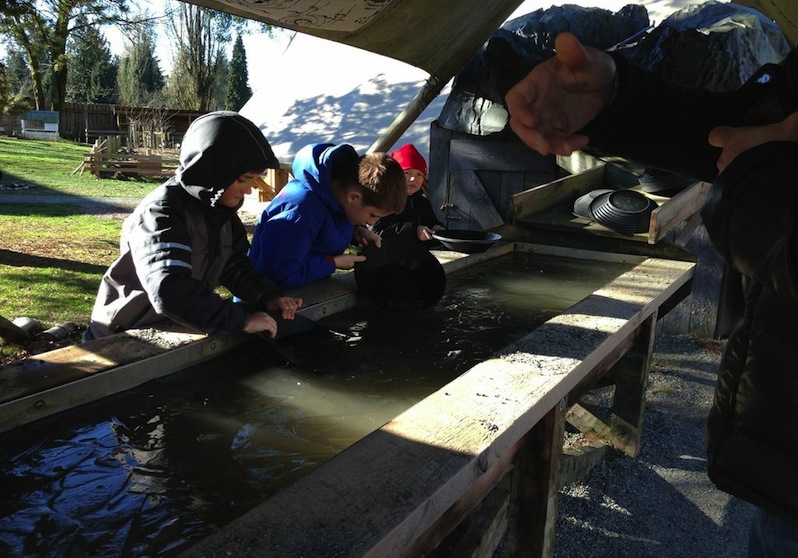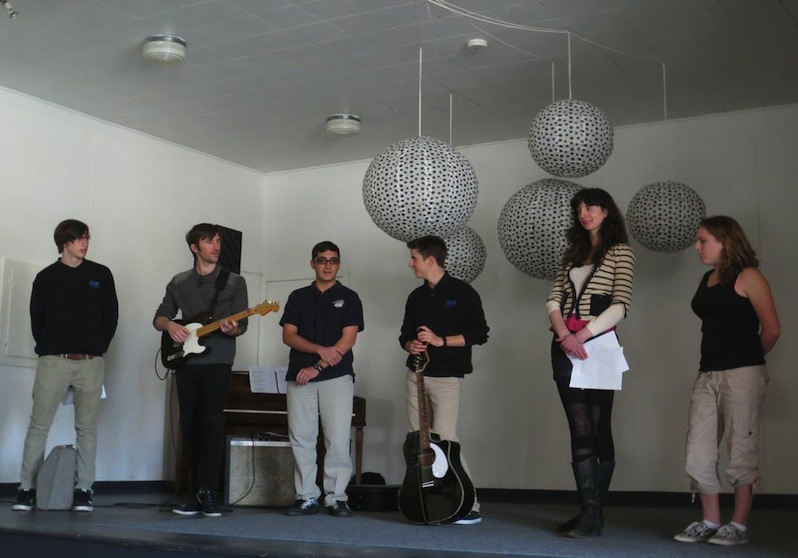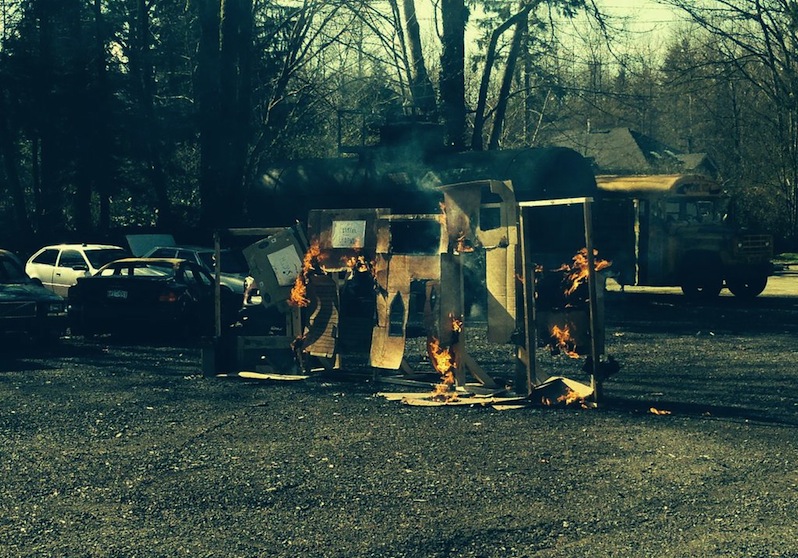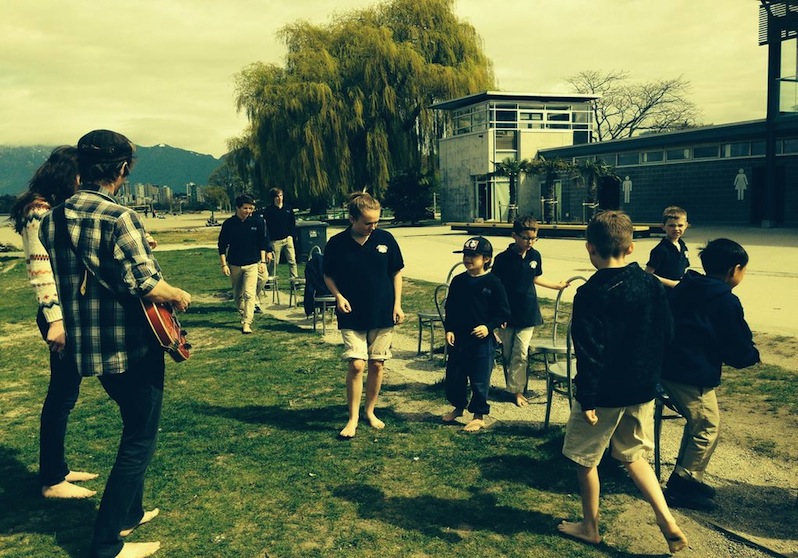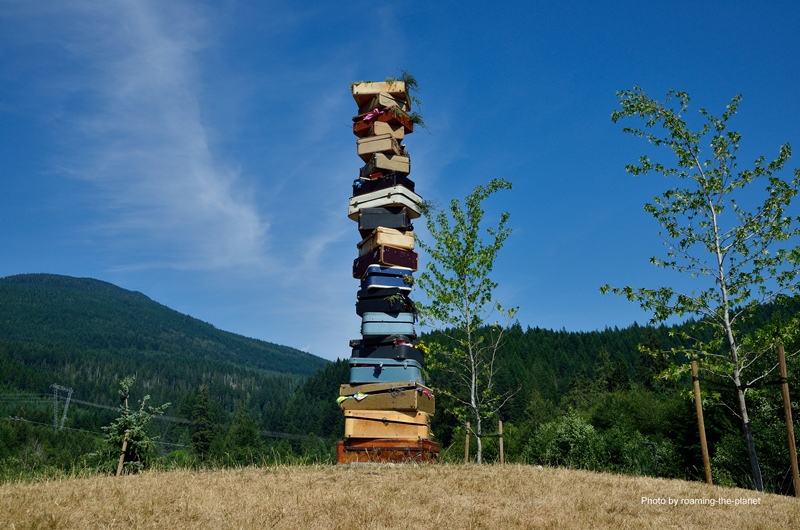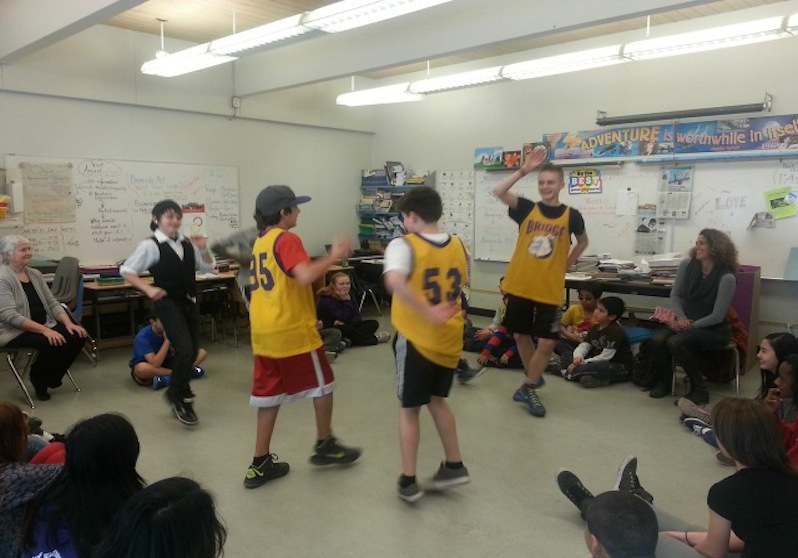Alcuin College Gr 3/4 and Gr 10
Arts Education, Geography, Language Arts, Social Studies
School
Alcuin College, North Vancouver, BC
Teachers
Chantelle Nascimento and Darcey Riley
Artists
Barbara Adler and Proud Animal members: Skye Brooks, Ben Brown and Gavin Youngash
Class
Two classes of Grade 3-4 and Grade 10 students
Connection to the Vancouver Biennale Exhibition Theme
Vancouver Biennale Legacy: Echoes (Michel Goulet, France) – Students discussed how public art installations create spaces and opportunities for community engagement.
The curatorial theme of the 2014-2016 Vancouver Biennale Exhibition is Open Borders / Crossroads Vancouver . This project connects to this theme in many ways:
- Opening the border between the Intermediate and Middle School students through a collaborative learning process.
- Exploring the borders of nations through immigration policies in a historical and contemporary context.
Other Sources of Inspiration
- Ancestry.com
- Burnaby Village Museum
- BC Archives website
- Jimmy Dean, “Big Bad John”
- K’naan, “In the Beginning” (Somali-Canadian immigration story in rap)
- SoCalled and Tanya Tagaq (mixing music from cultures)
- Walking Tour of Chinatown
Overview
Drawing from the listed community-based resources to generate questions about national identity, immigration, settlement and community, Grade 3 / 4 students explored the Canadian immigration experience by participating in a Barkerville project while Grade 10 students investigated the impact of immigration during the time period of 1815 – 1914 and the evolution of immigration policies. Through in-depth research, diary entries and discussions with their peers, Grade 3 /4 students inquired into the entire journey of the immigrants and their experience both physically and mentally. Grade 10 students related immigration issues from the past to the present time by interviewing immigrants within their community to acquire understanding on their motivation for immigrating and the settlement process and experience. Guided by spoken word artist, Barbara Adler and her music band, Proud Animals, the students wrote and performed original songs to express their thoughts and feelings about national identity, community and immigration.
BIG IDEAS
Immigration shapes our national identity
Guiding Questions
How has Canada benefitted from immigration? How have immigrants benefitted from living in Canada?
Curriculum Access
Arts Education: Learnt about rhythm, different instruments, song content and the power of expression through multi-literacy.
Business Education: Grade 3/4 brainstormed and inquired into what is required in order to prepare for starting up a business in a new place.
Geography: Grade 3/4 researched and learnt about the coastline from Victoria to Quesnel, BC.
Language Arts: Wrote stories, diary entries and created original lyrics to express their responses to the BIG IDEAS.
Social Studies:
Grade 3/ 4: Studied Canada’s history through the Barkerville project and the economic and political factors that influenced the interaction between aboriginal people and pioneer settlers
Grade 10: Studied immigration during the period of 1815-1914, and aboriginal and settler relationships
Learning Process
Grade 10 students began their unit of inquiry through connecting visual images of immigrants with the question “What is an immigrant?” connecting the question to the importance of community, belonging and relating that to the settlement of a new, changed environment. From there, the students shared their own experiences in order to deepen their understanding through dialogue with other immigrants on their journey of change, hope, and fear. The students continued their inquiry into the historical context of how immigration shaped Canada in the years 1814-1915, including a look at immigration policies such as the Chinese Head Tax and the relationship between settlers and aboriginal people.
Grade 3/4 students started their inquiry unit with a mock gold rush provocation in a local park mirroring the effects of a gold rush. The students researched, discussed, described, and acted out the entire journey and way of life of the pioneers at Barkerville including their interactions with aboriginal people. They simulated the life experience of a town that had gone through the economic cycle of boom and bust. Working with Barbara Adler, a spoken word artist and her band, the two groups of students came together to express their responses to the project Guiding Questions, “How has Canada benefitted from immigration? How have immigrants benefitted from living in Canada?”
Student Creation
Grade 3 / 4 Students
• Wrote a life story of an assigned character for the Barkerville experience in diary form
• Built shops/offices that look and function as 1860’s place of business in Barkerville with 6 x 3 wooden frames.
• Created a mind map of how people help each other and their connections
Grade 10 Students
• Created interview questions and conducted interviews with immigrants from their community
• Discussed and proposed improvement to Canada’s current immigration policies
All Students
• Wrote original scores to communicate their insights on immigration in Canada in relation to historical evidence. Themes of perseverance through hardship, working together, interdependence, and sharing resources and dreams were explored.
Taking Action
Through a school performance, students shared recognition for the contributions of immigrants to our country and insights of life’s new found meanings from the immigrants’ perspectives. Through a deeper sense of why people immigrate and the experience they encounter when they live in a new community, Grade 10s can volunteer to help and welcome new immigrants in their community and act as role models for the younger students.
With heightened awareness of the danger of fire to the Barkerville community, grade 3 and 4s will initiate, develop and implement a fire safety plan in their home or within the community. Through better understanding of natural resources in our country, the students will acquire a deep rooted respect for the pioneers of our country.
Time Line
January:
• Introduction to the Biennale project
• Grade 3/4: introduction to the gold rush with mock gold rush exercise
• All students visited Chinatown for an introduction of the history of immigration and settlement in Canada.
February:
Grade 10 Students
• Shared experiences of people who have had to make significant changes in their lives for a better quality of life
• Interviewed immigrants in their community on their motivations and experiences as immigrants
• Researched way of life in 1814-1914, immigration policies and settler and aboriginal relationships
• Discussed where improvements could be made to Canada’s current immigration policies
Grade 3/4 Students
• Received a name and profession for Barkerville experience, researched their likely country of origin and created a diary from their perspective
• Explored aboriginal relationship with pioneer explorers
• Visited the Burnaby museum for Barkerville town simulation
March:
• Grade 3/4s: asked questions to Grade 5s about why people may have immigrated to Canada in 1860
• Learned about geography of the trip from Victoria to Quesnel BC and the conditions of sailing
• Brainstormed the supplies for their trip to Barkervile and what they need to start a business
• Given a 6×3 wooden frame, students created a business that would look and function in 1860 Barkerville and created a mind map to show the interconnectedness of all the businesses
• Both grades attended artist workshops with Barbara Adler and her band covering the following sessions:
• Listened to examples of songs that tell a story about a character and learned about songwriting
• Each Grade 10 student brought one interesting line, transcribed from their interview. Grade 3/4 students brought the writing about their Barkerville characters.
• Both grades wrote lyrics inspired by these lines connecting to the BIG IDEAS
• Both grades worked collaboratively to create a chorus, melody and rhythm for the song
• Students shared instruments that they brought into the class and the history behind them
• Worked on the order for the lyrics. Practiced and rehearsals
• Grade 3/4 Barkerville experience day of burning reenactment. Fire Department arrived and burnt down the town. The students experienced a total loss in a matter of minutes. Grade 3/4 students performed their original song to mark the day.
• Grade 3/4 students reflected on the entire learning experiences.
April:
• Both grades took a field trip to Echoes at Kitsilano Beach and discussed how public art installation extends opportunities for community engagement. The students performed their songs on-site.
• Practice and rehearsals
• Grade 10 students school performance at Alcuin College with a Q&A session
Reflection
Artist: Barbara Adler
My bandmates and I deeply appreciated the flexible, inquiry-based learning approach practiced at Alcuin College. From the minute we stepped into the open concept school, we realized that we would be working with a different level of student engagement in the process. The intermediate students and the middle school students came with their own excitement about writing songs and lyrics. It was wonderful (and sometimes hilarious) to have in-depth conversations with the grade 3\4s about exactly how many times we should sing “we share it” at the end of a chorus. Although these kinds of choices sometimes seem minor, we took it as a sign that the students were making the song (and the ideas behind it) their own. In a similar way, we were very impressed with how the middle school students incorporated and then grew past our advice about songwriting. The song we started writing with them expanded dramatically from where we started out: lyrics were added, melodic hooks and even instrumental parts. It was very gratifying to see an initially reserved group of students step up to the challenge and publicly sing a song they’d collaborated on together. In our arrangement of the piece, I even saw a reflection of the Biennale sculpture Echoes, which we visited on our field-trip. After we had discussed the role of public art as a meeting place for reflection and discussion, I came to see how our rehearsals of the song performed a similar role for our group. By creating together, we got to have some great discussions about how to communicate the emotions behind their personal stories of immigration. Thank you for another fun project!

